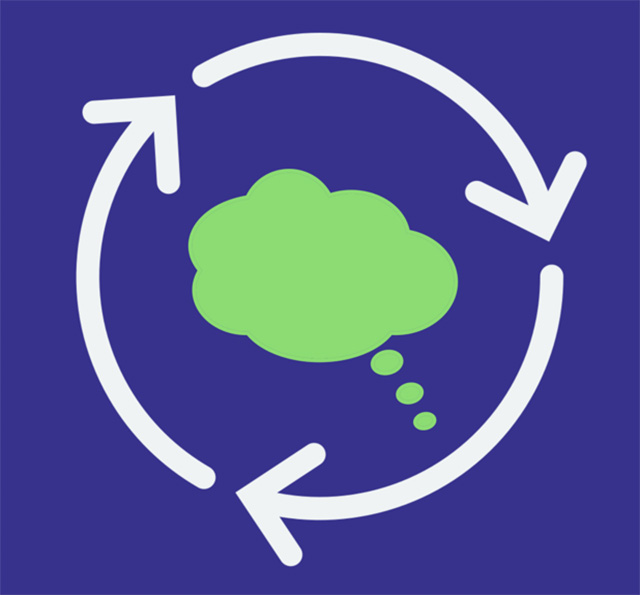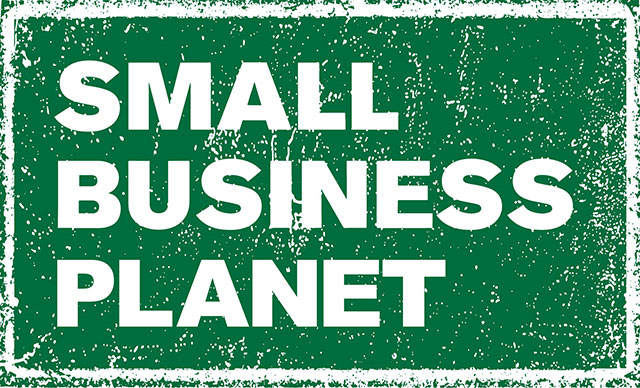The role of business in the 21st century is to solve problems for people and the planet while generating a profit. A key part of this journey will involve developing a business model that is regenerative by design instead of one that destructs and extracts from the natural environment, people, and other living species. This article will explain how the circular economy can help and introduce 'five ways of thinking' to support you in developing a more sustainable and circular business model.

Why do we need a Circular Economy?
On the 29th of July 2021 we reached Earth Overshoot Day, the day when our demand on natural resources and ecosystem services in a year surpasses what the Earth can regenerate in that year. For perspective, in 1970 that day occurred on the 30th of December. It is clear, our current take-make-waste linear economic model that relies on constant growth and the extraction of finite natural resources is approaching a dead end, or quite frankly, we, humanity, are approaching a cliff edge.
We must take a different path and one that is growing in popularity is the Circular Economy (CE). The Circular Economy is an economic model that aims to eliminate waste and pollution, circulate (e.g., re-use, repurpose, recycle, etc.) products and materials, and regenerate nature. Furthermore, to tackle the climate crisis, we must shift towards using renewable energy although that is only half the story. 45% of global greenhouse gas emissions come from how we make and use products and food, therefore, re-designing our economies to become circular will help us tackle this. A fundamental component on the pathway towards a circular economy is ensuring businesses, both large and small, change from linear to circular business models.
What is a Circular Business Model?
Firstly, what is it not. A linear business model only consists of a forward value chain, meaning once a product has been designed, manufactured, and sold to an individual the company's responsibility for that product ends.
A circular business model (CBM) on the other hand forms part of a value network, where at one end it attempts to design out waste and at the other it aims to recover waste from one area and reintroduce it as a product or service. For example, Toast Ale collect left-over bread from local bakeries and use it to create beer, effectively taking waste from one place and turning it into a valuable product elsewhere. Not only does this approach cut costs but it also cuts emissions, in fact Toast Ale claim to have cut CO2 emissions by 11 tonnes because of this approach.
Ultimately, a CBM shifts the focus away from the 'hit and run' style of business where the aim is simply to create a profit from one-off sales, towards capturing value and profit through the reuse, recycling and redistribution of products and materials.
How Do I Begin Developing a Circular Business Model?
The ability to think of 'new ways of doing things' is at the heart of developing sustainable and circular businesses. The following 'five ways of thinking,' coupled with stories and ideas, are intended to help you think outside the box so you can begin your journey to developing a more sustainable and circular business.
1. How could you eliminate waste and pollution?
Start by thinking where and how you could eliminate waste and pollution, an obvious place to start might be switching to a renewable energy supplier, minimising water usage, and changing how you travel to work.
As an example, let's say you sell scented candles and they come wrapped in plastic-coated wrapping paper, inside boxes, with a shiny plastic sticker. You might think it looks nice, but quite frankly it impacts your profit, it costs the planet and after all, people just want the scented candle. So, ask yourself, does it need to be wrapped? Could you use old newspapers or old boxes instead? Could you handwrite your company name rather than using plastic stickers? If you make these changes while explaining why you are doing it, people are more likely to buy into it and prefer you over wasteful, unsustainable rivals. This is just one example, but think about what opportunities there are to eliminate waste from your business? The key here is to challenge your own assumptions.
Another story which highlights this way of thinking is the Kebab story, click here to check it out.
2. How could you extend the use of products and materials?
The second way of thinking is to consider how you could extend the use of products / materials before binning or recycling them.
I was recently working with a small service-based business on their journey to becoming net positive and we identified that they had a lot of 'used' cardboard which they were sending to recycling. I asked, what more could you do with this? Rather than answering there and then, they put this question to their community via social media and received an abundance of creative ideas. It turns out there was a Facebook community group set up specifically for people to advertise cardboard boxes and other forms of packaging in the local area. They began posting images of the cardboard boxes onto the Facebook group and within weeks they had several people collect boxes from the office. Not only is this better for the planet, but it is better for profit. They now have a network of 1000s of people who know about their business, simply by posting photos of cardboard boxes.
3. How could you use 'waste' in your business?
Firstly, it is important to point out that the concept of waste has been created by humans, as "nature knows no waste." So, if we created it, we can create something better.
Elvis and Kresse was founded in 2005 after a chance encounter with the London Fire Brigade and learning that decommissioned and damaged fire hoses go straight to landfill, despite still being an extremely valuable resource. Elvis and Kresse began transforming the decommissioned fire hosing into luxury handbags, purses, and other accessories. Not only is this frugal business model better for profit, but they have managed to save over 300 tonnes of used fire hosing ending up in landfills.
4. Who could you partner with?
You cannot develop a circular business model on your own, a key part of the circular economy is partnering with different organisations and sectors to think of innovative ways to re-use, re-purpose and recycle materials. The UK-based company, UpCircle are a good example of this. They collect used grounded coffee from local coffee shops and use it as a core ingredient in their skin-care products. In this instance, they are thinking of how they can reduce waste and how to incorporate waste into their business model. Furthermore, any coffee shop wanting to become circular would need to find partners, like UpCircle, who they could collaborate with to extend the use of their grounded coffee.
5. How could you turn your product into a service?
As people begin to live more balanced, sustainable, and lower impact lifestyles they will want to own 'less stuff,' meaning people will be looking for opportunities to rent or lease products. We're already seeing this in the automobile industry, with the global car leasing market set to reach £123.87 billion by 2028. An example of a company turning their product into a service is Smol, who deliver a laundry detergent to your door, replacing the need to buy them as individual products. The Smol detergent also arrives wrapped in cardboard which can be recycled (although not returned), and it has the added benefit of creating a lower negative impact on the environment when compared with the chemicals in other, more aggressive, detergents.
How could you turn your products into services?
If you run a service-based business, what more could you rent or lease?
Developing a sustainable and circular business is a pathway filled with experimentation, twists and turns; there is no one-shoe size fits all approach, but instead common themes highlighted here in the 'five ways of thinking.' This article is intended to catalyse your creative thinking and support you to cross the threshold on your journey to developing a business that is a force for good.
Visit WebsitePublished: 13 December 2021
